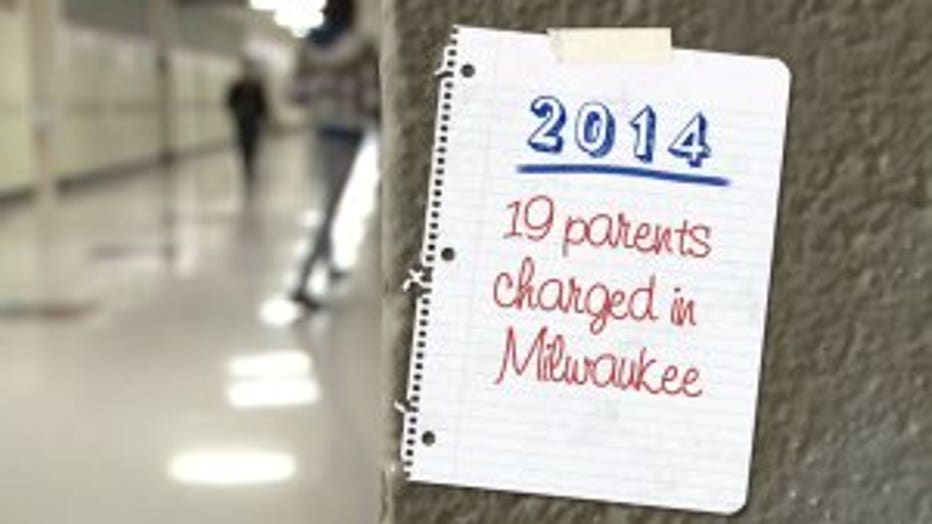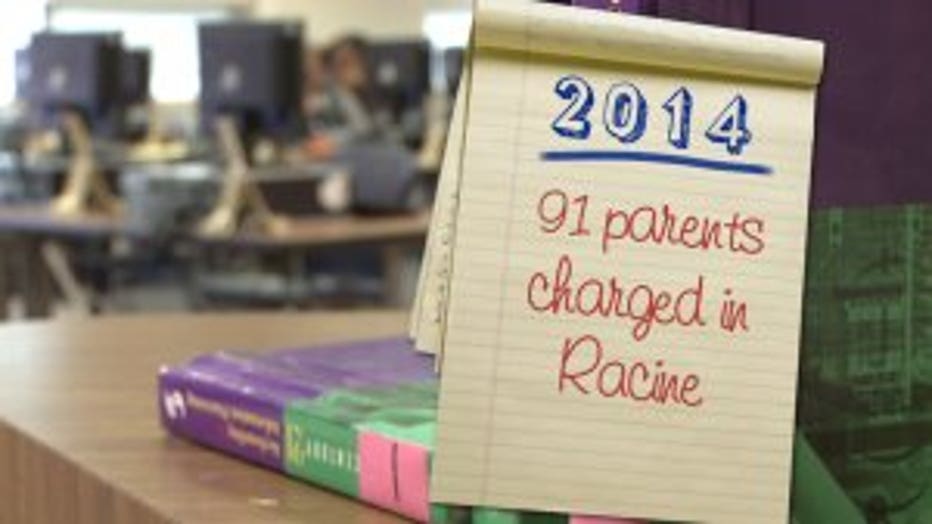"We should intervene sooner:" Truancy rate among young kids skyrockets, what can be done?
MILWAUKEE (WITI) — In the last five years, truancy among young children in Wisconsin has skyrocketed. Statewide, the habitual truancy rate among kindergartners is up 41%. It's the same story for first, second and third graders too, according to data collected by the Wisconsin Department of Public Instruction.
Students are habitually truant when they miss five or more days of class, without an excuse.
During the 2013-2014 school year, 5,770 kindergartners were habitually truant -- nearly 10% of the 61,000 kindergartners enrolled across across the Badger State. That's the highest truancy rate in years.

"We should intervene sooner," says Molly Jasmer, Assistant Corporation Counsel for Waukesha County. "There's all this research out there about how we can make big impacts for these kids and these families, and we're not all doing them."
In Waukesha, Jasmer says, the courts and the schools are working together to curb truancy among younger students. Waukesha County's newly-formed Truancy Committee is now targeting kids under 12. The school district is now referring younger students to the courts, with the assurance they won't be in "trouble," but their parents will get the resources they need to get their children to school.
In 2014, Waukesha filed 109 deferred prosecution agreements, or contracts requiring parents to get their kids to school. Just under half of those cases involved children under 12.
"What we knew from our older truants was that most of them were young truants," Jasmer says. "They started truanting in kindergarten, first, second, third, fourth grade."
The goal isn't to punish the kids, Jasmer says, but figure out what it's going to take to get the child back in the classroom. The solutions are as varied as the families in need.
"We knew from our own experience here in Waukesha that we have to get those kids younger," Jasmer says.
She says it's easier to help families early on because bad habits are hard to break. Helping a family with a first grader is much easier than helping a parent of a teenager.
So far, Waukesha's new strategy seems to be working. Last school year, the number of young truants, kids 12 and under, had started to decline dramatically. During the 2013-2014 school year, none of the district's kindergartners were regularly missing class anymore.
But for bigger school districts, with more kids and fewer resources, the solution to truancy isn't as easy.
Last school year, 20% of kindergartners were habitually truant in Racine Unified. In Kenosha Unified, 12% of kindergartners regularly missed class. In Milwaukee Public Schools, 50% of all kindergartners last year missed school on a regular basis -- a 50% increase from five years ago.
MPS says it's aware of the increase and is implementing new strategies to curb truancy among younger students. Just this year MPS appointed 10 regional attendance liaisons to work with the neediest kids in the district. The liaisons are working with hundreds of kids in 21 schools that MPS has deemed at-risk for truancy.

"Early childhood education is very, very important," says Jennifer Mims-Howell, the Senior Director of Specialized Services for MPS. "We try to inform parents and say 'hey, this is an important time in your child's life. This is the foundation. We want them here to learn.'"
MPS has started tracking attendance at each school and plans to train staff this summer specifically about habitual truancy and the strategies teachers can use to intervene before a student misses too many days.
The goal, says Mims-Howell, is prevention.
Stacy Tapp, Chief of Communication and Community Engagement for Racine Unified says its schools are also aware of the uptick in young truancy. Tapp says Racine is currently in the process of forming a task force to address the increase.
"There's nobody that disagrees that we should get the kids to school. The question is how," says Scott Wittkopf, a political and public policy consultant.
In 2014, Wittkopf authored a study for the Forward Institute, a non-profit non-partisan organization. He looked at truancy in MPS.
His report proved just how important attendance is to student and school success.
"It seemed like kind of a 'duh' moment,'" he recalls.
Schools which had high rates of truancy had the worst school report card scores.
"The fact that it was actually a greater effect than student poverty was actually very, very surprising," Wittkopf said.
Wittkopf says the bigger school districts, like MPS, need the most resources to help tackle truancy. But the money's not always there.
The TABS program, created in the 1990s to get MPS kids back to class, has six police officers and seven full-time social workers and assistants dedicated to curbing truancy. It runs out of the Boys and Girls Club of Greater Milwaukee.
Walter Goodwyn, Director of Dropout Prevention Services for the Boys and Girls Club of Greater Milwaukee, says 97% of the kids that come into the TABS program don't come back -- presumably because they're back in class, and the intervention worked.

But schools, he says, aren't referring young kids to the program.
Kids younger than 12 are not given truancy citations in Milwaukee County. Goodwyn says social workers in the schools send letters, call parents, and set up home visits if necessary to get young kids to class.
"At TABS, we don’t see student or parent referral for citations until 25 or more days have been missed, which tells me that at least some of the interventions being employed by the social workers with the parents of our younger students are working," Goodwyn says.
Most of the kids in TABS are high school students. FOX6 rode along with truancy officers last month. Even on the coldest day in April, kids cutting class were easy to spot -- much easier to spot than little kids who are likely just sitting at home and not roaming the streets.
That's why, when young kids start skipping school a lot, counties like Milwaukee and Racine target parents. Parents can be fined $181 for "contributing to truancy." In serious cases, when kids have missed more than 35 days of school, the Milwaukee County District Attorney's Office can file criminal charges against mom or dad and put them in jail for up to 30 days. But with the highest truancy rates in five years, it doesn't seem to be working.
"Let's face it. A punitive system does not work," Wittkopf says.

In 2014, 19 Milwaukee County parents were charged with misdemeanors for not getting their kids to school. On average, when a case was charged in 2014, a child had already missed 77 days of school. A school year has 180 days.
In Racine, 91 parents w

ere charged. And on average, when a case was charged, a child had missed 47 days of school already. On average, those kids were only eight-years-old.
Many of the same parents who can't get their kids to school don't show up for court, either.
Of the 19 parents charged in Milwaukee County last year, only four showed up for court and got their kids back to school. Arrest warrants were issued for the other parents. As a result, the Milwaukee County District Attorney's office is changing course.
"I think can work in limited circumstances, but obviously we don't see that it has overall been a great solution to the problem over the years," says Kent Lovern, Chief Deputy District Attorney for Milwaukee County. "As a practical matter, we weren’t seeing a lot of results in changed behavior and so several years ago, we decided that what we really wanted to focus on is to get to the root of why the child is not coming to school."
Now charges are only filed as a last resort, and MPS is referring fewer parents to the court system -- but the number of kids missing class is on the rise.
If you need help getting your children to school in Milwaukee County, call the Boys and Girls Clubs of Greater Milwaukee for resources or to arrange a meeting with your child. If you live on the north side, call 414-447-5325. If you live on the south side, call 414-385-3100.

